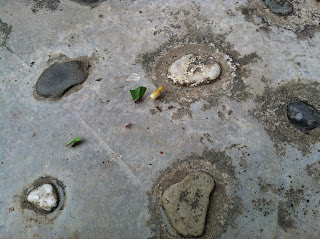It is astounding how connected the queer community is across the
globe. The solidarity that exists amongst queer people consistently
blows my mind. Last night, I attended the pride celebration in
Cochabamba– the one day a year that gay, transgender, lesbian, bisexual,
androgynous, queer, etc. people take the to the streets without fear or
shame based on their sexual orientation or gender identity. The
festival was amazing, inspiring, and empowering. I never expected to see
so many people in the streets supporting the movement.
What’s
more, however, is the sense of solidarity I feel with the queer people I
meet in Cochabamba. This isn’t an isolated experience– anytime I have
traveled and met other queer people, it’s the same feeling. Queers
across the globe are one, interwoven community. No matter where you go,
if there is a queer community and you are queer, you will be accepted.
This is my experience, at least.
It’s hard to describe the
experience of a transnational queer community to people who are not
queer; because I can’t imagine anything quite the same exists. It’s this
intrinsic understanding of respect when you meet people. No matter how
alone I have felt at times this summer, or out of place I feel at
straight, glamorous clubs (the type of place that checks my ID three
times because my gender expression, age, and sex don't match), I know
that if I can find that one queer bar, everything will be ok. Because
people who are queer just get each other.
Every day in
Cochabamba, somebody exclaims over my gender identity. “Lucas… why do
you have a boys’ name?” or “You can’t be older than 14…” or “Are you
male or female? I don’t understand.” Well, sir, I have a boy’s name
because I chose that name. I’m 21 years old despite your disbelief. I am
not really male or female and I would prefer not to educate you on the
complexities of gender at this point in time.
But when you
are in a queer place (a bar, a café, a street corner) nobody asks those
questions. There is a sense of intrinsic respect for other human beings
that goes so far beyond the consciousness of much of the non-queer
community. No matter how ablaze in consternation your brain might be, it
really just doesn’t matter if I am a boy or a girl and, yes, I do get
asked that every day. But in the queer community there is this sentiment
that it just doesn’t matter because we are human and we are all
fighting for both internal and external acceptance because we are all
different, and weird, and abnormal. And we all make people who are not
like us just a little bit uncomfortable. And because we all experience
this, we are close. Surrounded by a crowd of queer people last night
–drag queens, transsexual women, young gay couples, and old gay couples,
single lesbian mothers– I felt more connected to complete strangers who
speak different languages, believe in different religions, and
experience different realities, than I feel on a street corner in the
United States surrounded by other English-speaking, white, middle-class
Americans.
There’s something beautiful in our struggle.
There’s something beautiful in the knowledge that no matter how
despised, stupid, or wrong you feel, if you can just get to that place–
that place in every city where a community of people who are different
and yet all so the same gather– if you can get there, you will be OK.
Somebody will understand you. Somebody won’t make a face when you
introduce yourself or ask you why you are who you are or, better yet,
what the hell you are.
I think one of the biggest gifts I
have been given in my life is to be able to experience this sense of
community from some of the people who are most marginalized in this
world. Although all of our struggles are different, the queer community
at its core is one accumulative struggle, rooted in solidarity.









































